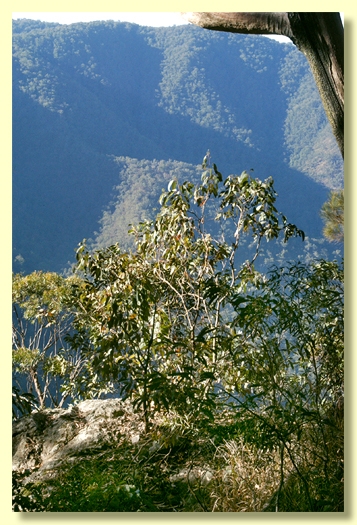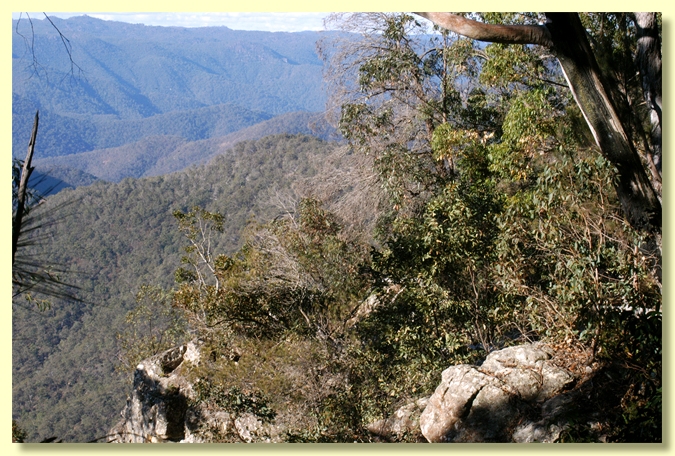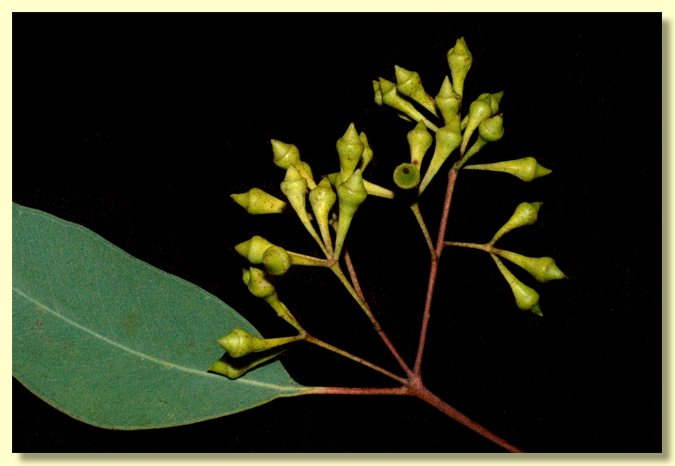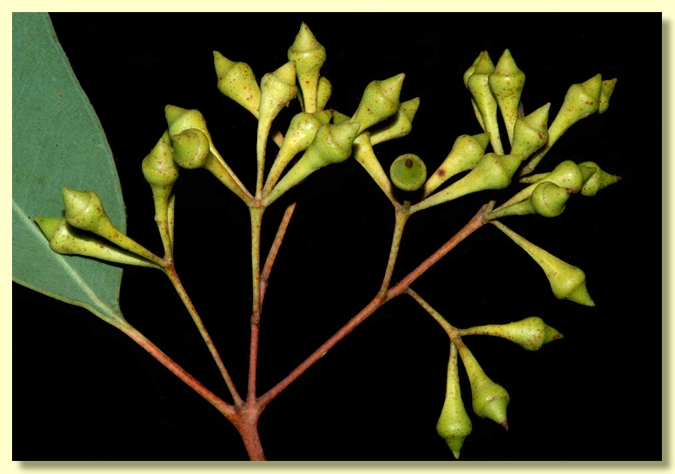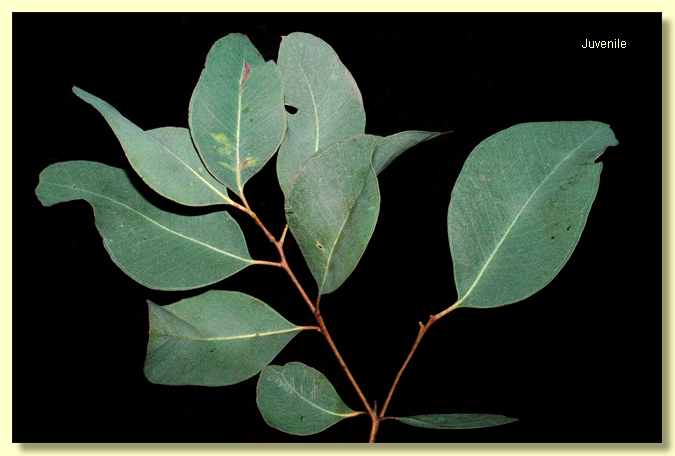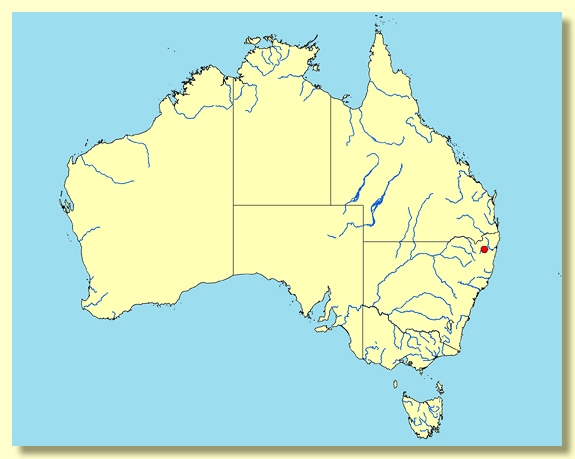Eucalyptus | Symphyomyrtus | Adnataria | Terminales | Rhodoxylon | Concolores
Euclid - Online edition
Eucalyptus scopulorum
Small tree to 8 m tall. Forming a lignotuber.
Soft corky pale grey ironbark to small branches, branchlets not glaucous.
Juvenile growth (coppice or field seedlings to 50 cm): stem ± square in cross-section, not glaucous; juvenile leaves always petiolate, opposite for 3 to 6 pairs then alternate, ovate, 3.5–11 cm long, (1.8)2.5–5(6) cm wide, base tapering to petiole, dull grey-green to green.
Adult leaves alternate, petiole 0.8–2.5 cm long; blade broadly lanceolate to lanceolate, 6–11 cm long, 1.5–3.8 cm wide, base tapering to petiole, concolorous, dull, green to grey-green, side-veins c. 45° to midrib, densely to very densely reticulate, intramarginal vein parallel to and just within margin, oil glands obscure.
Inflorescence terminal compound and some axillary single umbels, peduncle erect, 0.7–1.5(1.8) cm long; buds 7 per umbel, pedicels 0.6–0.9 cm long, sometimes the edges extending longitudinally along the hypanthium to form two ridges. Mature buds obovoid to ± diamond shaped, 0.7–0.9 cm long, 0.35–0.45 cm wide, not glaucous, scar present, operculum conical, often narrower than the hypanthium at the join, stamens inflexed, with outer staminodes, anthers adnate, positioned obliquely at filament tip, cuboid, dehiscing by terminal pores, style long, stigma pin-head shaped, locules 3 or 4, the placentae each with 4 vertical ovule rows. Flowers white.
Fruit on pedicels 0.3–0.6 cm long, barrel-shaped to obconical, 0.6–0.9 cm long, 0.5–0.7 cm wide, not ridged, ribbed or angled longitudinally, not glaucous, disc descending vertically, valves 3 or 4, enclosed.
Seeds dark brown, 1.5–2 mm long, flattened-ovoid, often pointed at one end, dorsal surface shallowly pitted, hilum ventral.
Cultivated seedlings (measured at ca node 10): not grown at time of publication.
Flowering has been recorded in October.
Eucalyptus scopulorum is a small ironbark tree restricted to a very small area near the Nymboida National Park on the Northern Tablelands of New South Wales. It has only been found growing in crevices near the edge of very high steep cliffs. The leaves, buds and fruit of E. scopulorum are never glaucous and the juvenile leaves are usually elliptical to ovate.
Eucalyptus scopulorum is very closely related to E. caleyi, the latter differing by its glaucous leaves, buds and fruit, and by having orbicular to deltoid to ovate juvenile leaves (elliptical to ovate juveniles in E. scopulorum).
Within its subgroup (i.e. Eucalyptus series Rhooxylon, ironbarks with regularly inflexed stamens and with an outer whorl of sterile stamens (staminodes) in the buds), E. scopulorum could also be confused with E. fusiformis, both species having concolorous, dull green adult leaves and barrel-shaped to obconical fruit. E. fusiformis is separated by having slightly longer, narrower fruit (0.4–0.5 cm wide in E. fusiformis and 0.5–0.7 cm wide in E. scopulorum). E. fusiformis also tends to have slightly longer, narrower adult leaves but some overlap in dimensions between the two species does occur. Most other members of this subgroup, with barrel-shaped to obconical fruit similar to E. scopulorum, have glossy green adult leaves.
With its barrel-shaped to obconical fruit and non-glaucous, dull green adult leaves, E. scopulorum should not be confused with any other ironbark growing on the Northern Tablelands of New South Wales.
MORE ABOUT IRONBARKS
Eucalyptus scopulorum: Latin scopulus, a cliff, referring to the preferred habitat for this species.

